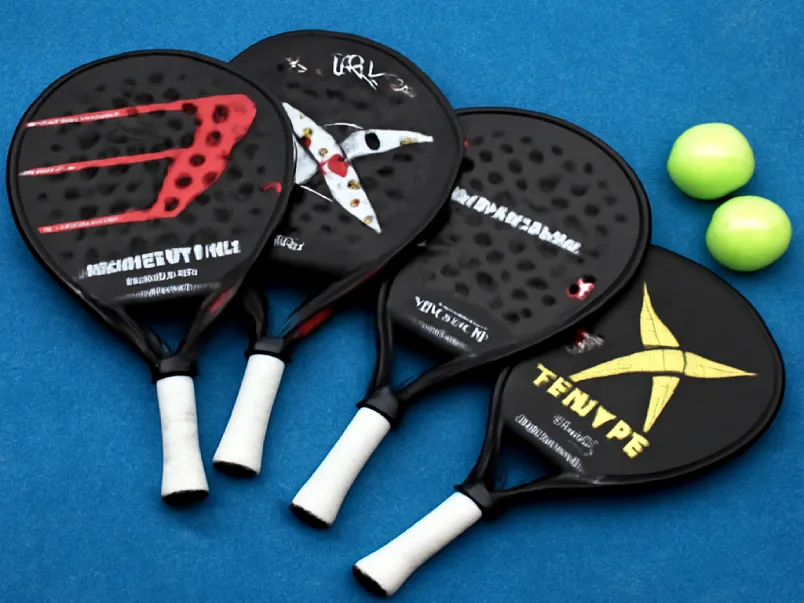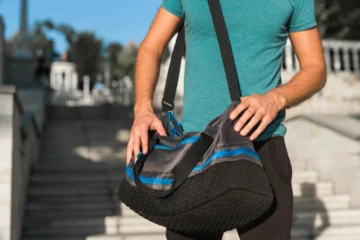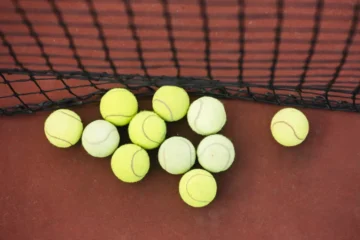Padel is rapidly gaining traction around the world. The sport combines elements of tennis and squash, offering a fun, dynamic experience that can be enjoyed by players of all ages and skill levels. As the sport grows, so does the demand for padel equipment. Whether you’re just starting out or looking to upgrade your gear, choosing the right racket can make all the difference in your game.
However, with so many options available, beginners often find themselves overwhelmed by the variety of padel rackets on the market. Worse still, it’s tempting to overspend on high-end models that feature advanced technologies and are better suited for pro players. But for beginners, these high-end rackets often provide more complexity than is necessary for learning the ropes of the game.
This guide is designed specifically for new players. We’ll break down the best affordable, high-quality padel rackets under $100 that emphasize control, forgiveness, and comfort—perfect for those just starting their padel journey. By the end of this article, you’ll have a clear understanding of what to look for in a beginner-friendly racket and be able to confidently make your selection.
I. Why Your First Padel Racket Matters (And Why You Shouldn’t Overspend)
A. The Goal: Learning, Not Winning
As a beginner, your primary focus should be on improving your technique, developing consistency, and gaining a feel for the ball. The goal isn’t to win every point but to learn how to play the game effectively. To do that, you need a racket that allows you to control your shots, understand the fundamentals, and improve your skills over time.
When you’re starting out, the right racket will help you build a solid foundation, while a more advanced racket might make learning harder by adding unnecessary complexity. More advanced models often come with higher power or advanced technologies that cater to experienced players, but for a beginner, this can lead to poor ball control and frustration.
B. Key Racket Qualities for Beginners
1. Control & Forgiveness
A racket with a round shape and soft core provides better control and a larger sweet spot. This means you’re more likely to hit the ball cleanly, even when your form isn’t perfect. Additionally, round rackets tend to be more forgiving, making it easier for beginners to maintain consistency and enjoy their game.
2. Comfort & Safety
Choosing a racket with proper shock absorption is essential to avoid strain on your arm. A racket that reduces vibrations can prevent injuries such as “tennis elbow,” a common issue for players who don’t have the correct equipment. Beginners should prioritize comfort and safety to ensure they can play without risking long-term injuries.
3. The Sweet Spot
A larger sweet spot means more room for error, which is crucial when you’re learning. Smaller sweet spots require more precision and are better suited to more advanced players who can generate power and control consistently. As a beginner, opt for a racket with a larger sweet spot to help you enjoy the game more and reduce frustration.
C. The $100 Sweet Spot
The price range of $50-$100 offers an excellent balance between affordability and quality. At this price, you can find rackets from trusted brands that deliver reliable performance without the expensive features that professional players might need. You get a racket that is durable, offers good control, and helps you focus on improving your skills rather than dealing with overly advanced specifications.
II. How to Choose: A Beginner’s Quick Guide to Padel Racket Specs
Understanding the specifications of a padel racket is key to choosing the right one for you. Below is a simple breakdown of the three most important factors to consider when purchasing your first racket.
A. Shape: Go Round
The shape of the racket affects how the ball comes off the strings and influences control, power, and comfort. For beginners, a round-shaped racket is the best option because it provides the maximum control and a larger sweet spot. These rackets are designed to help you develop your technique and reduce the risk of mishits.
B. Balance: Go Low
Rackets come in three types of balance: head-heavy, head-light, and even balance. For beginners, a low-balance racket (head-light) is ideal as it offers better maneuverability, especially when playing at the net. This helps with quick volleys and defense without overwhelming the player with extra weight in the head of the racket.
C. Core: Go Soft
The core material of a racket plays a crucial role in its feel and performance. EVA (Ethylene-Vinyl Acetate) soft foam is an excellent choice for beginners because it provides better control, absorbs vibrations well, and is generally more forgiving. A softer core reduces the power of the racket but increases precision, which is more useful for learning and improving your technique.
III. The Top 5 Entry-Level Padel Rackets Under $100
Here are the best entry-level rackets under $100, each chosen for its ability to balance control, comfort, and durability. These rackets will give you the edge as you start your padel journey.
Racket 1: The All-Round Control Master
Example: Bullpadel Vertex Lite / Head Alpha Motion
Key Specs: Round Shape, Low Balance, Soft EVA Core
Pros: Excellent for developing technique, very forgiving, comfortable on the arm.
Cons: Lacks raw power for smashes.
Best For: The pure beginner who wants to build a solid foundation in control and placement.
The Bullpadel Vertex Lite and Head Alpha Motion rackets are designed to help you focus on your technique. Their round shapes and soft cores provide superior control, making them ideal for beginners who want to improve their consistency and ball placement.
Racket 2: The Power & Comfort Hybrid
Example: Nox ML10 Pro Cup
Key Specs: Teardrop Shape, Medium Balance, Soft EVA Core
Pros: Offers a great blend of control and manageable power, superb comfort.
Cons: Slightly smaller sweet spot than a pure round shape.
Best For: The player who wants a versatile racket that can grow with them as they improve.
The Nox ML10 Pro Cup is a solid choice for those who want to balance power and control. While it’s not as forgiving as a round racket, its teardrop shape allows for more versatility, making it a great option as you advance in your skills.
Racket 3: The Manoeuvrable Net Dominator
Example: Adipower Light / Siux Swan 2.0
Key Specs: Round Shape, Very Low Balance, Soft EVA Core
Pros: Incredibly easy to handle, fantastic for quick volleys and reactions at the net.
Cons: Requires more player-generated power from the back of the court.
Best For: Players who love to play at the net and value speed and reaction above all else.
The Adipower Light and Siux Swan 2.0 are perfect for net players who rely on fast reflexes. These rackets have a very low balance, making them incredibly maneuverable for quick volleys, though they do require more power from the player when hitting from the back of the court.
Racket 4: The Durable & Forgiving Tank
Example: Kuikma PR 990 Soft / Starvie Mérida
Key Specs: Round Shape, Low Balance, Soft EVA Core, Fiberglass Face
Pros: Extremely durable construction, fantastic price-to-performance ratio, very forgiving.
Cons: Can feel less “precise” than more expensive models.
Best For: Budget-conscious players and those who want a worry-free, durable racket for frequent play.
The Kuikma PR 990 Soft and Starvie Mérida offer excellent durability and forgiveness. Their construction makes them perfect for players who want a racket that can handle frequent use while providing comfort and control.
Racket 5: The Best Value for Brand-Name Quality
Example: Drop Shot Electro Lite / Akkeron Rapidity
Key Specs: Round/Teardrop Hybrid, Low-Medium Balance, Soft EVA Core
Pros: Incorporates technology from well-known brands at an aggressive price point.
Cons: May not have the same widespread recognition or resale value.
Best For: Beginners who want brand-name engineering and innovation without the high cost.
The Drop Shot Electro Lite and Akkeron Rapidity offer excellent value for money, incorporating technology from top-tier brands while keeping the price low. These rackets are perfect for those who want reliable, brand-name quality without breaking the bank.
IV. Comparison Table: At a Glance
| Racket Name | Shape | Balance | Core | Best For | Price Estimate |
|---|---|---|---|---|---|
| Bullpadel Vertex Lite | Round | Low | EVA Soft | All-Round Control | ~$90 |
| Nox ML10 Pro Cup | Teardrop | Medium | EVA Soft | Power & Comfort | ~$95 |
| Adipower Light | Round | Low | EVA Soft | Net Play & Speed | ~$85 |
| Kuikma PR 990 Soft | Round | Low | EVA Soft | Durability & Value | ~$70 |
| Drop Shot Electro Lite | Hybrid | Low-Med | EVA Soft | Brand Tech on a Budget | ~$80 |
V. Essential Beginner Accessories (That Won’t Blow Your Budget)
While the racket is the most important piece of equipment, a few accessories can enhance your experience on the court.
A. Padel Balls
Padel balls are different from tennis balls; they have less pressure and bounce. Make sure to invest in a good set of padel-specific balls to enhance your game.
B. The Overgrip
Adding an overgrip to your racket improves comfort and prevents slippage. It’s an inexpensive accessory that makes a big difference, and you should replace it regularly to maintain its effectiveness.
C. A Simple Racket Cover
A racket cover protects your investment from scratches and damage. It’s a small cost for a big benefit, ensuring your racket stays in good shape for longer.
VI. Final Verdict & Next Steps
Recap: The best beginner racket is one that feels comfortable and helps you learn.
As a beginner, it’s essential to choose a racket that offers control, comfort, and forgiveness. Avoid advanced models that might make learning harder, and focus on building a solid foundation with a racket designed for your skill level.
Top Recommendation Summary:
- Overall Best Start: Bullpadel Vertex Lite
- Best for Versatility: Nox ML10 Pro Cup
- Best Budget Pick: Kuikma PR 990 Soft
Final Advice:
Don’t overthink it. Choose a racket that fits the “round, low, soft” profile from this list, and focus on having fun on the court!
With this guide, you can confidently pick a beginner-friendly racket and start your padel journey with the right equipment. Happy playing!
FAQ Section
1. What is the best padel racket for beginners under $100?
The Bullpadel Vertex Lite is one of the best options for beginners under $100. It has a round shape, low balance, and soft EVA core, making it perfect for developing control and improving technique. It’s forgiving and comfortable, which is key for beginners.
2. What should I look for in a beginner padel racket?
When selecting a beginner padel racket, focus on the following:
- Shape: Go for a round-shaped racket for maximum control and a larger sweet spot.
- Balance: Low balance is best for beginners, offering more maneuverability and easier volleys.
- Core: Choose a soft EVA core for better control and vibration absorption, which helps prevent arm strain.
3. Is it worth spending more than $100 on a padel racket as a beginner?
For most beginners, spending more than $100 on a padel racket is unnecessary. Rackets in the $50-$100 range, like the Bullpadel Vertex Lite or Nox ML10 Pro Cup, offer excellent performance, durability, and comfort without the advanced features that professionals need.
4. Can I use a tennis racket for padel?
No, tennis rackets are not suitable for padel. Padel rackets are smaller, lighter, and solid without strings, while tennis rackets are larger and strung. Padel rackets are designed specifically to handle the unique demands of the sport, such as playing in an enclosed space and with a smaller ball.
5. How long will a padel racket last?
The lifespan of a padel racket depends on how frequently it’s used and the quality of its construction. With proper care, most beginner rackets can last for years. To extend the life of your racket, always use a cover, avoid extreme temperature conditions, and replace the overgrip regularly.
6. What accessories should I buy as a beginner?
As a beginner, it’s important to invest in a few basic accessories:
- Padel Balls: Ensure they are designed specifically for padel.
- Overgrip: Provides better grip and comfort.
- Racket Cover: Protects your racket from damage.
7. Are soft-core rackets better for beginners?
Yes, soft-core rackets are generally better for beginners. They offer better control, reduce vibrations, and provide a more forgiving feel, which is essential when you’re still perfecting your technique. A soft EVA core helps with comfort and reduces the risk of injury.




